Have we all underrated the humble pencil?
- Published
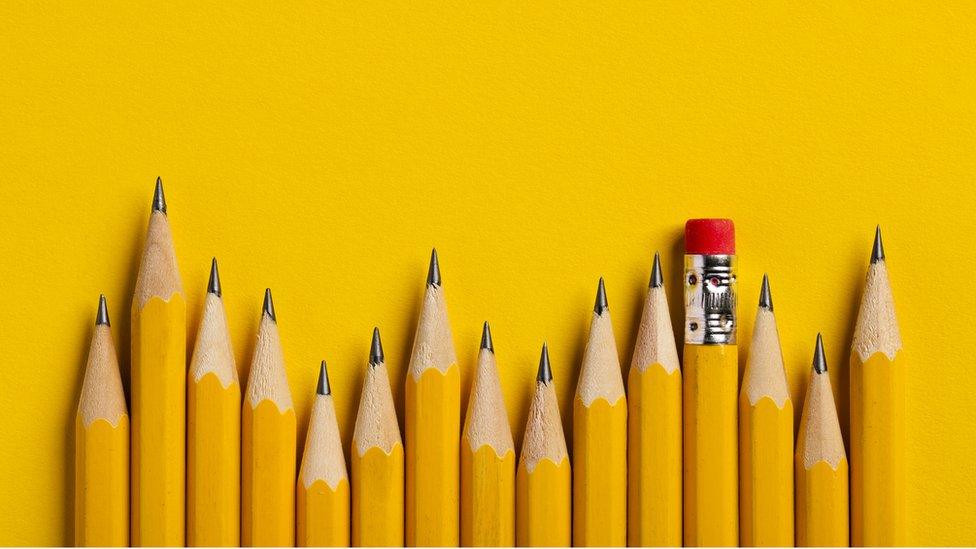
When the great 19th Century American writer Henry David Thoreau made a comprehensive list of supplies for an excursion, he specified obvious items like a tent and matches, and added string, old newspapers, a tape measure and a magnifying glass.
He also included paper and stamps, to make notes and write letters.
Strange, then, that he omitted to mention the very pencil with which he was making the list. Stranger still, when you realise that Thoreau's family made its money by manufacturing high-quality pencils, external.
The pencil seems fated to be overlooked. It's the theme of an old English riddle: "I am taken from a mine, and shut up in a wooden case, from which I am never released, and yet I am used by almost everybody."
We say the pen is mightier than the sword, but not the pencil - it's too easily erased.

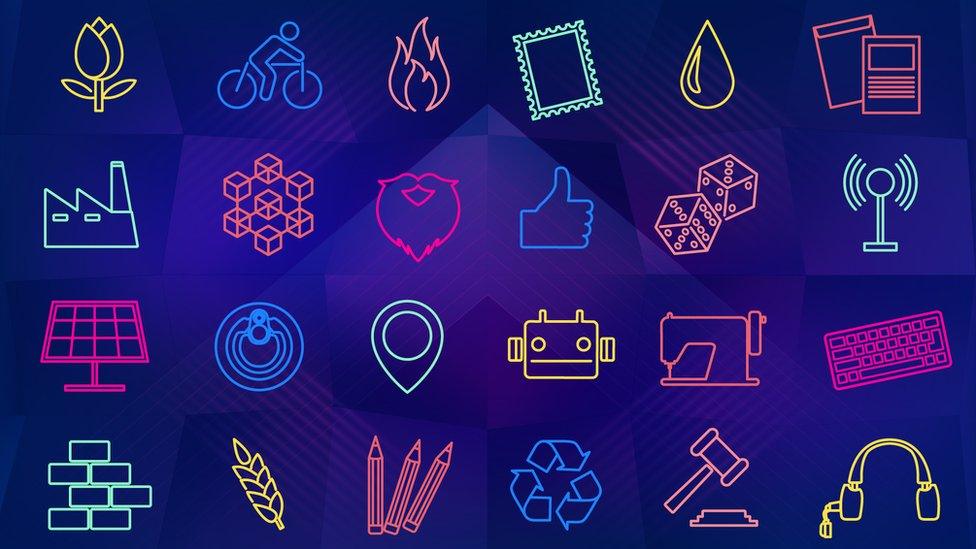
50 Things That Made the Modern Economy highlights the inventions, ideas and innovations that helped create the economic world.
It is broadcast on the BBC World Service. You can find more information about the programme's sources and listen to all the episodes online or subscribe to the programme podcast.

We don't even give it the courtesy of a sensible name. "Pencil" is derived from the Latin word "penis" meaning "tail", because Roman writing brushes were made from tufts of fur from an animal's tail.
"Lead pencils" achieve the same effect without needing ink.
Or, indeed, lead - they actually contain graphite. The idea of graphite on a stick of wood is about 450 years old.
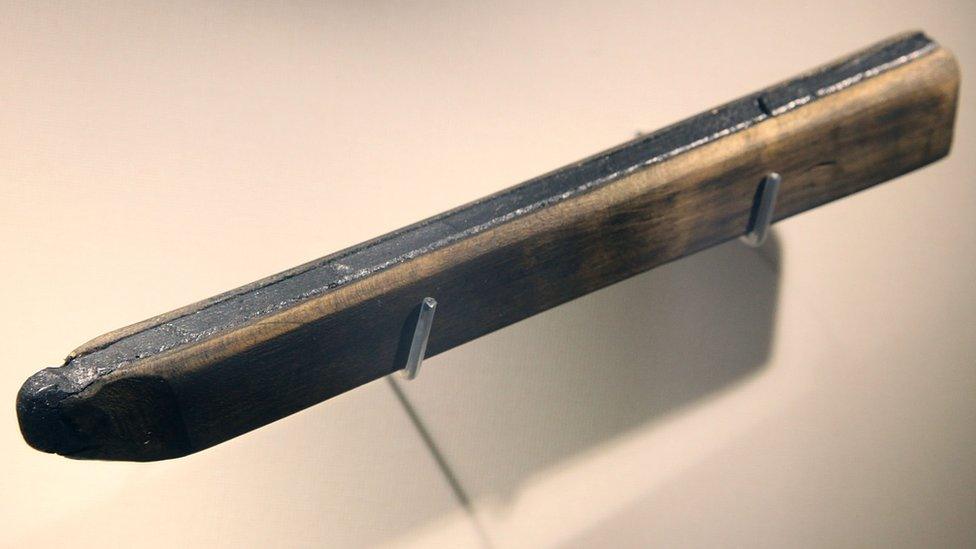
The oldest known pencil in the world, found in a timbered house built in 1630
The pencil has a number of champions.
Pencil historian Henry Petroski points out that its very eraseability makes it indispensable to designers and engineers. "Ink is the cosmetic that ideas will wear when they go out in public," he writes. "Graphite is their dirty truth."
"Take a pencil to write with on aeroplanes," is the novelist Margaret Atwood's first rule of writing, external. "Pens leak. But if the pencil breaks, you can't sharpen it on the plane, because you can't take knives with you. Therefore, take two pencils."
And then there's the American economist Leonard Read, who was a crusader for the principles of small-government free-market economics.
In 1958, Read published an essay entitled "I, Pencil", external - written in the voice of the pencil itself.
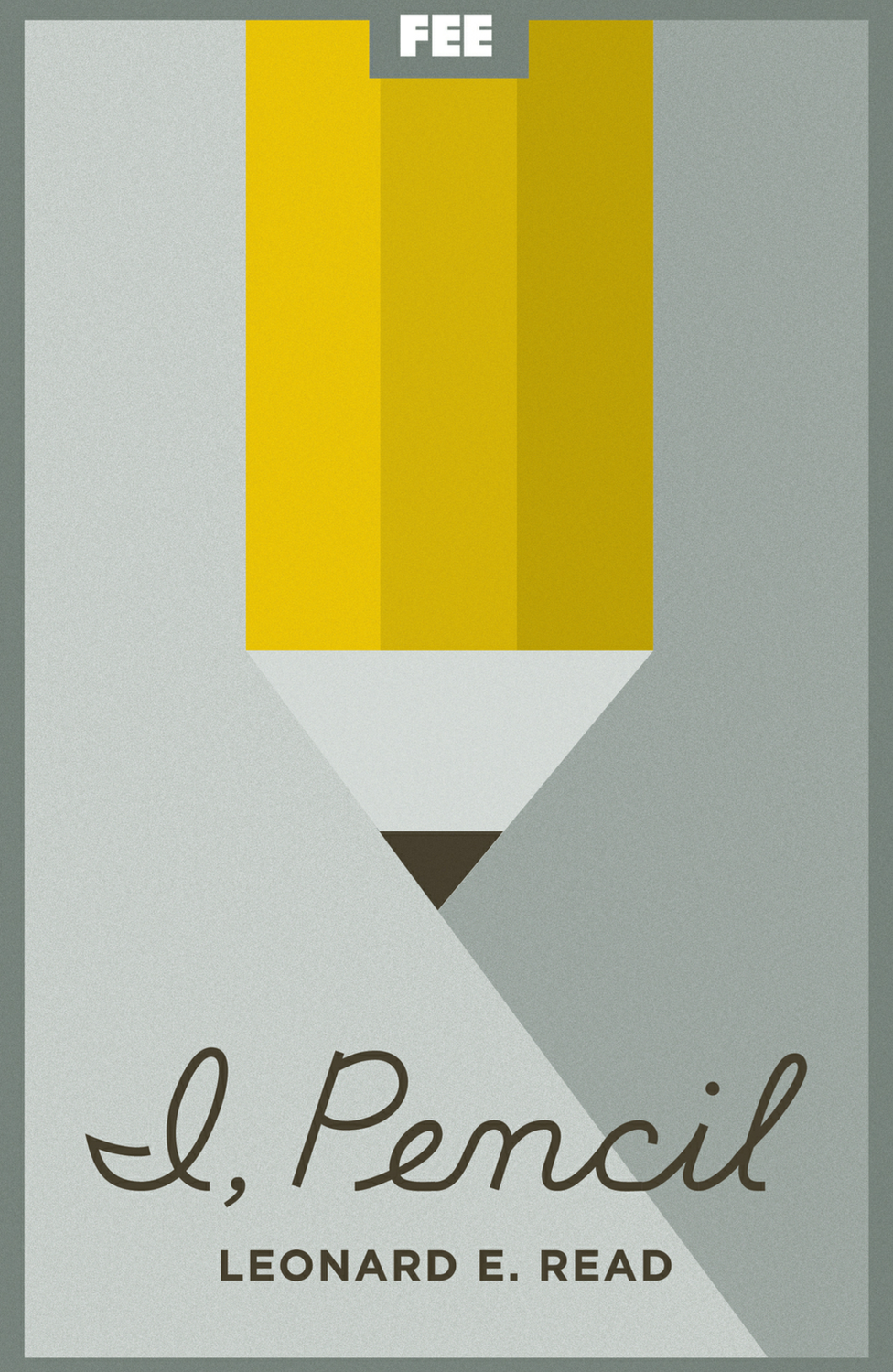
While the pencil in the English riddle seemed resigned to its obscurity, Read's pencil is loud and a touch melodramatic: "If you can become aware of the miraculousness which I symbolize, you can help save the freedom mankind is so unhappily losing."
Read's pencil is well aware that it doesn't immediately appear impressive: "Pick me up and look me over. What do you see? Not much meets the eye — there's some wood, lacquer, the printed labeling, graphite lead, a bit of metal, and an eraser."
And yet, the pencil goes on to explain, collecting its cedar wood required saws, axes, motors, rope, and a railway car. Its graphite is from Ceylon - modern-day Sri Lanka - mixed with Mississippi clay, sulphuric acid, animal fats and numerous other ingredients.
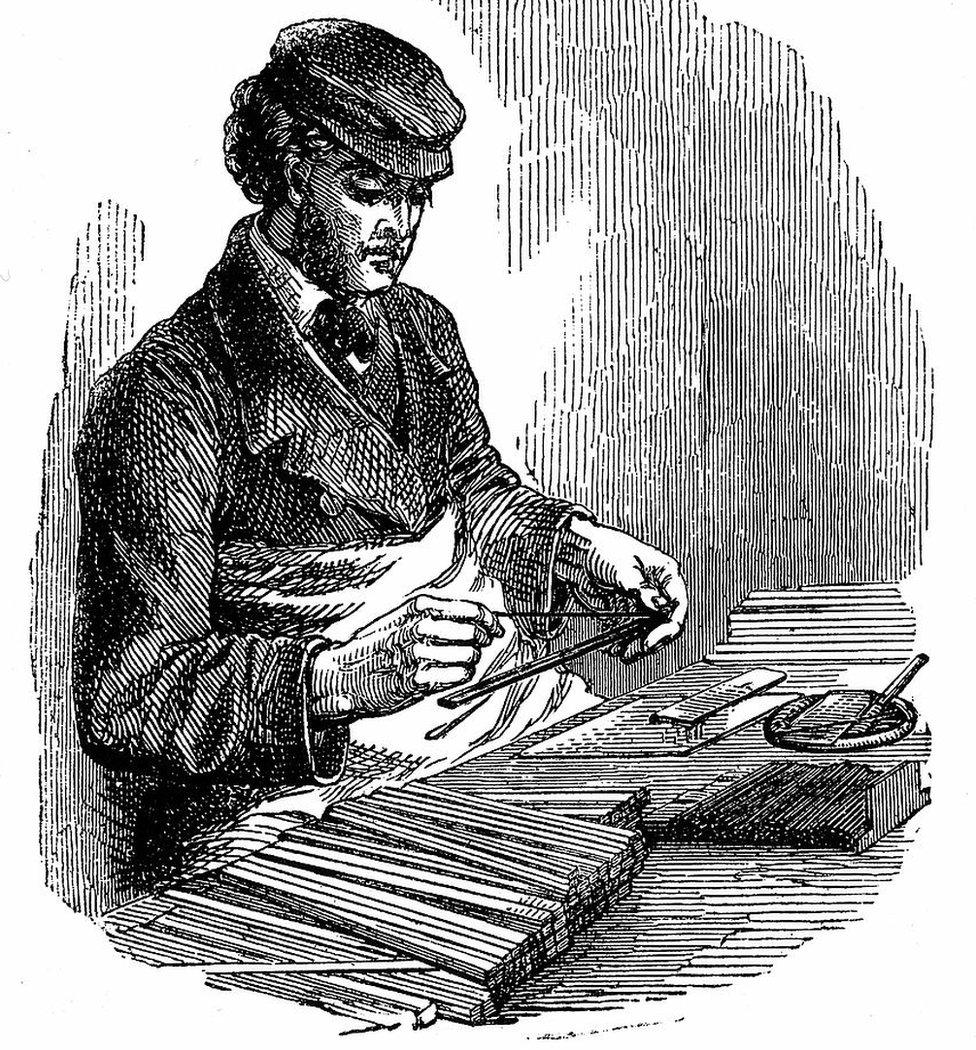
A man inserts graphite between strips of cedarwood in an 1872 engraving

And don't get the pencil started on its six coats of lacquer, its brass ferrule, or its eraser - made not from rubber, it wants you to know, but from sulphur chloride reacted with rape-seed oil, made abrasive with Italian pumice and tinted pink with cadmium sulphide.
Read's pencil writes a stirring conclusion: "Leave all creative energies uninhibited. Have faith that free men and women will respond to the Invisible Hand. This faith will be confirmed."
The "Invisible Hand" refers to the idea that unseen market forces balance the demand and supply of goods in a free market.
That's why critic Anne Elizabeth Moore calls the essay a a "seductive metaphor for spontaneous order", external, and it garnered wider fame when the Nobel prize-winning economist Milton Friedman adapted it for his 1980 TV series Free to Choose.
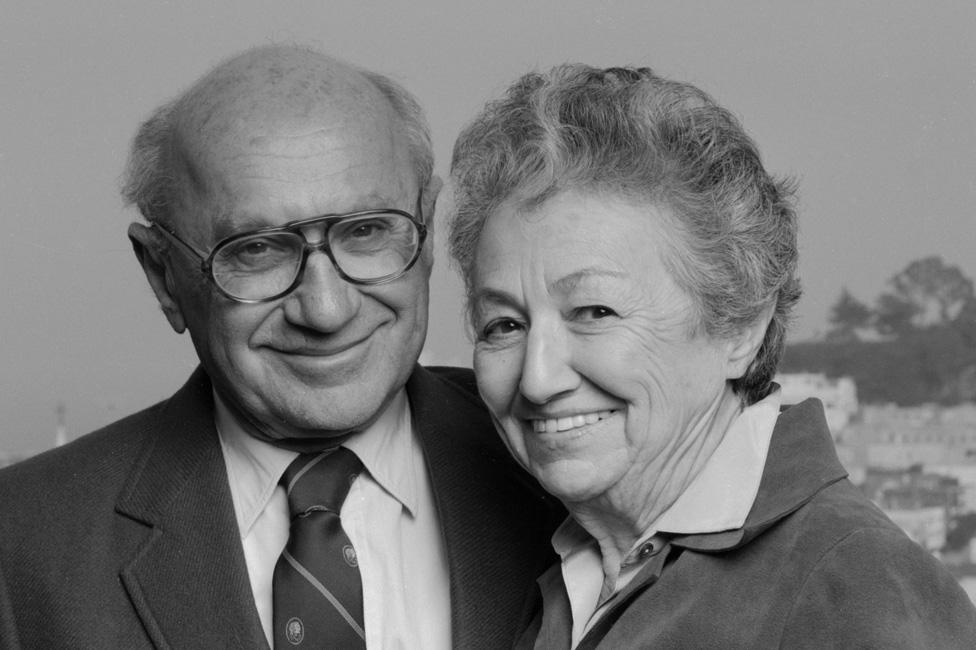
Milton Friedman with his wife and fellow economist Rose, who co-produced "Free to Choose"
Friedman drew the same lesson from the humble pencil's formidably complex origins - it was an astonishing testimony to the power of market forces to co-ordinate large numbers of people with nobody in overall charge: "There was no commissar sending out orders from central office; it was the magic of the price system."
Go back in time 500 years or so, and you'd have seen the magic of the price system swing into action for yourself.
Graphite was first discovered in the English Lake District, external.
Legend has it that a ferocious storm uprooted trees in the idyllic valley of Borrowdale. Underneath their roots was a strange, shiny black substance that was initially dubbed "black lead".
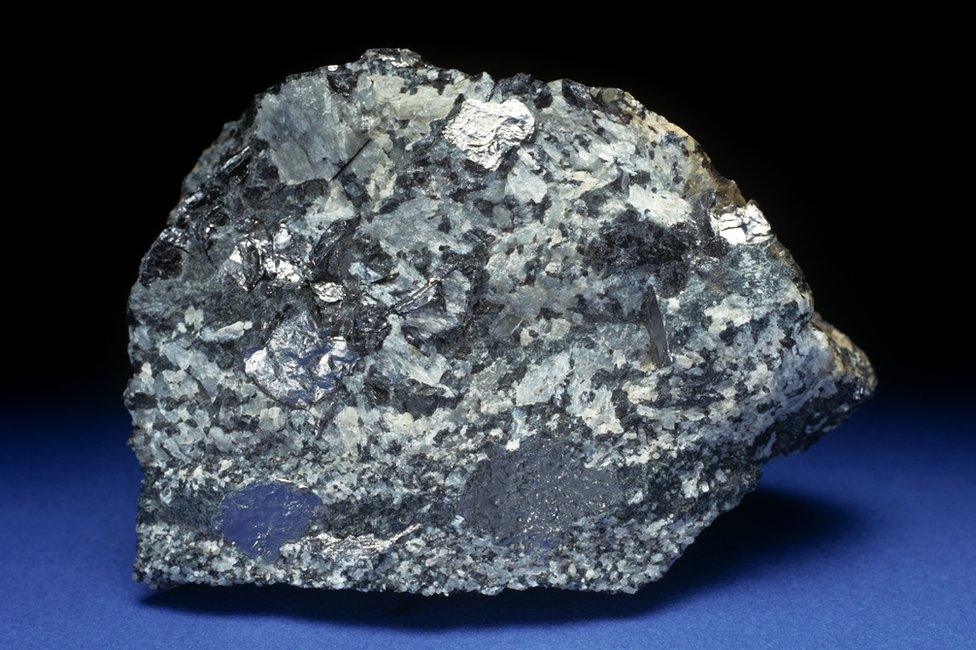
It was quickly used as "a marking stone", as celebrated in this 300-year-old market seller's cry:, external "Buy marking stones, marking stones buy; Much profit in their use doth lie; I've marking stones of colour red; Passing good, or else black Lead."
Because graphite was soft yet heat-resistant, it was also used for casting cannonballs.
It soon became a precious resource - not quite as pricey as its fellow carbon-based cousin the diamond, but valuable enough for miners to be supervised by armed guards as they changed out of their clothes at the end of the shift, lest they try to smuggle a nugget away.
By the late 1700s, French pencil manufacturers were happily paying to import high-quality Borrowdale graphite. But then war broke out, and England's government sensibly decided not to make it easy for the French to cast cannonballs.

More things that made the modern economy

What were the pencil-makers to do? In stepped Nicolas-Jacques Conté, French army officer, balloonist, adventurer - and pencil engineer.
Conté painstakingly developed a way to make pencil leads from a mix of clay with low-grade powdered continental graphite. For these efforts, the French government awarded him a patent. And this is where we might start to question whether Read's pencil is right to be so fiercely proud of its free-market ancestry.
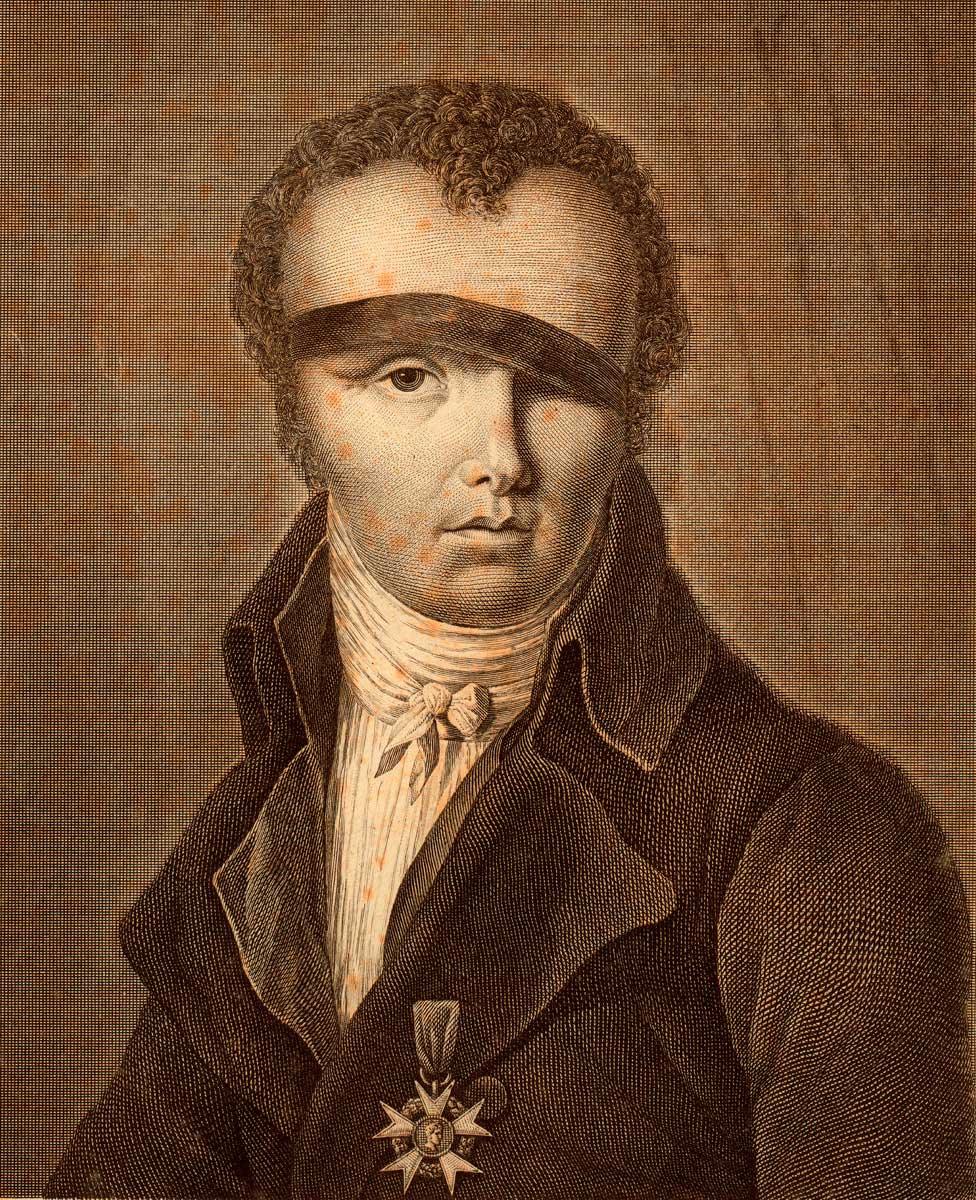

Would Monsieur Conté have put such effort into his experiments without the prospect of a state-backed patent?
Economist John Quiggin raises a different objection, external. While Read's pencil underlines its history of forests and railway carts, both forests and railways are often owned and managed by governments.
And while Friedman was right that there is no Pencil Tsar, even in a free-market economy there are hierarchies.
Leonard Read's loquacious instrument was made by the Eberhard Faber company, now part of Newell Rubbermaid - and, as in any conglomerate, its employees respond to instructions from the boss, not to prices in the market.
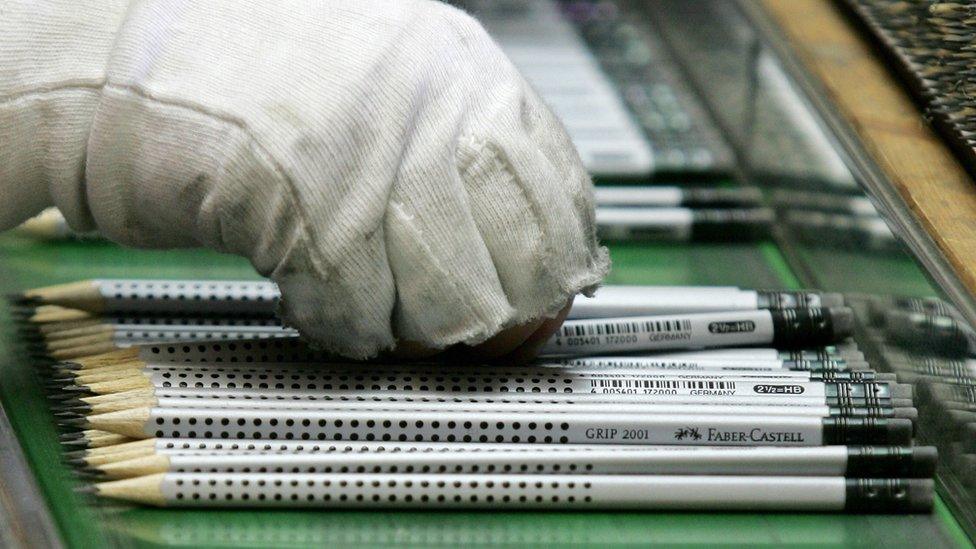
In practice, then, the pencil is the product of a messy economic system in which the government plays a role and corporate hierarchies insulate many workers from Friedman's "magic of the price system".
Read might be right that a pure free market would be better, but his pencil doesn't prove the case.
It does, though, remind us how profoundly complex are the processes that produce the everyday objects whose value we often overlook. The economy that assembles them for us cheaply and reliably is an astonishing thing.
The author writes the Financial Times's Undercover Economist column. 50 Things That Made the Modern Economy is broadcast on the BBC World Service. You can find more information about the programme's sources and listen to all the episodes online or subscribe to the programme podcast.
- Published14 April 2011
